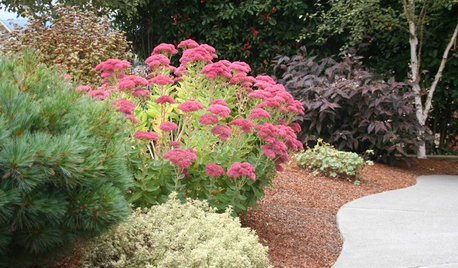Spider mites
grizzman
10 years ago
Related Stories

HEALTHY HOMEWhat You Need to Know About Dust and How to Fight It
Breathe easier with these 10 tips for busting mites, dander and other microscopic undesirables
Full Story
HOUSEPLANTSIndoor Winter Gardens for Cheerier Days
Bring plants inside for drab-days mood boosting — not to mention cleaner indoor air and protection for your greenery
Full Story
GARDENING GUIDESGreat Design Plant: Knock Out Roses
As glorious as their high-maintenance kin for a fraction of the work, Knock Out roses make even beginners look like garden stars
Full Story
HOUSEPLANTSHow to Grow Orchids Indoors
Orchids are the exotic aristocrats of the flower world and can make themselves comfortable in almost any home
Full Story
GARDENING GUIDESHow to Get Your Landscape Ready for Summer Storms
Don’t let high winds, dust storms and torrential rainfall catch you or your landscape by surprise
Full Story
HOUSEPLANTS8 Essentials for Healthy Indoor Plants
Houseplants add so much to our homes — and can thrive when grown in the right conditions. Keep these tips in mind
Full Story
HOUSEPLANTS8 Houseplants You Can't Kill
They're forgiving and let you forget. Houseplants don't get any easier than this
Full Story
HOUSEPLANTSMeet a Palm That's Fine With Fluorescent Light
Get the look of the tropics without the full-on sun and high humidity — parlor palm tolerates regular indoor conditions with aplomb
Full Story
GARDENING GUIDESPacific Northwest Gardener's August Checklist
Deadheading perennials, cutting raspberry canes and preparing for the onion harvest keeps Northwest gardeners busy in August
Full Story
HOUSEPLANTSOne Pot, One Big Shot of the Tropics
Give your rooms exotic flair in a single stroke. Tall Kentia palm fits the tropical bill beautifully
Full StorySponsored
Columbus Area's Luxury Design Build Firm | 17x Best of Houzz Winner!
More Discussions







cole_robbie
PupillaCharites
Related Professionals
Arlington Landscape Contractors · Beachwood Landscape Contractors · Bowie Landscape Contractors · Brookfield Landscape Contractors · Framingham Landscape Contractors · Hannibal Landscape Contractors · Lakewood Landscape Contractors · Mastic Beach Landscape Contractors · Pine Hills Landscape Contractors · Richmond Landscape Contractors · Stony Brook Landscape Contractors · The Woodlands Landscape Contractors · Vacaville Landscape Contractors · Waltham Landscape Contractors · Goldenrod Landscape ContractorsgrizzmanOriginal Author
PupillaCharites
cole_robbie
PupillaCharites
slowjane CA/ Sunset 21
PupillaCharites
happyhydro
Pamela Marshall